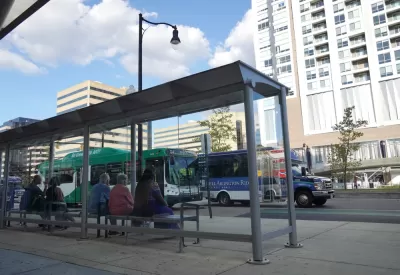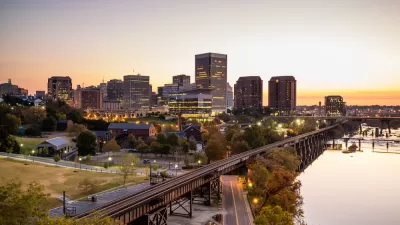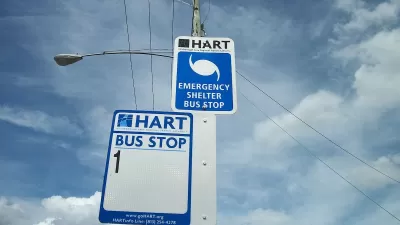Thanks to state and regional funding, the city eliminated fares while making service improvements.

“Many cities enacted fare-free transit options during the pandemic, both as a means to help essential workers and to limit interactions. But as life returns to a semblance of normal, some cities are backing away from the idea.”
Not so in Alexandria, Virginia, where buses remain free two years after fares were first eliminated during the early part of the pandemic, writes Jake Blumgart in Governing.
“Ridership on Alexandria’s buses has surged back to almost pre-pandemic levels not only because of free fares. A redesign of the bus system that allowed for increased frequencies is an equally important part of the story,” Blumgart notes. Critics of fare-free transit often argue that cutting fares often sacrifices service. In Alexandria’s case, state and regional funding allowed the city to maintain and improve service while keeping fares free. “Alexandria was able to compete for funds from Virginia’s Department of Rail and Public Transportation, which allowed them to provide free fares for the next three years. Competitive monies from the Northern Virginia Transportation Commission are used to increase frequencies on the city’s bus lines and redesign the system.”
City leaders are optimistic that they will be able to continue financing free fares and service improvements thanks to Alexandria’s robust tax base. “The city is in the midst of a decadeslong growth spurt and the population is the highest ever. Valuations of properties are greater than during the pandemic too, so Alexandria policymakers won’t face the hard choices of more depressed municipalities.”
FULL STORY: For This City, Fare-Free Transit Is a Big Success

Trump Administration Could Effectively End Housing Voucher Program
Federal officials are eyeing major cuts to the Section 8 program that helps millions of low-income households pay rent.

Planetizen Federal Action Tracker
A weekly monitor of how Trump’s orders and actions are impacting planners and planning in America.

Ken Jennings Launches Transit Web Series
The Jeopardy champ wants you to ride public transit.

California Invests Additional $5M in Electric School Buses
The state wants to electrify all of its school bus fleets by 2035.

Austin Launches $2M Homelessness Prevention Fund
A new grant program from the city’s Homeless Strategy Office will fund rental assistance and supportive services.

Alabama School Forestry Initiative Brings Trees to Schoolyards
Trees can improve physical and mental health for students and commnity members.
Urban Design for Planners 1: Software Tools
This six-course series explores essential urban design concepts using open source software and equips planners with the tools they need to participate fully in the urban design process.
Planning for Universal Design
Learn the tools for implementing Universal Design in planning regulations.
Ada County Highway District
Clanton & Associates, Inc.
Jessamine County Fiscal Court
Institute for Housing and Urban Development Studies (IHS)
City of Grandview
Harvard GSD Executive Education
Toledo-Lucas County Plan Commissions
Salt Lake City
NYU Wagner Graduate School of Public Service





























